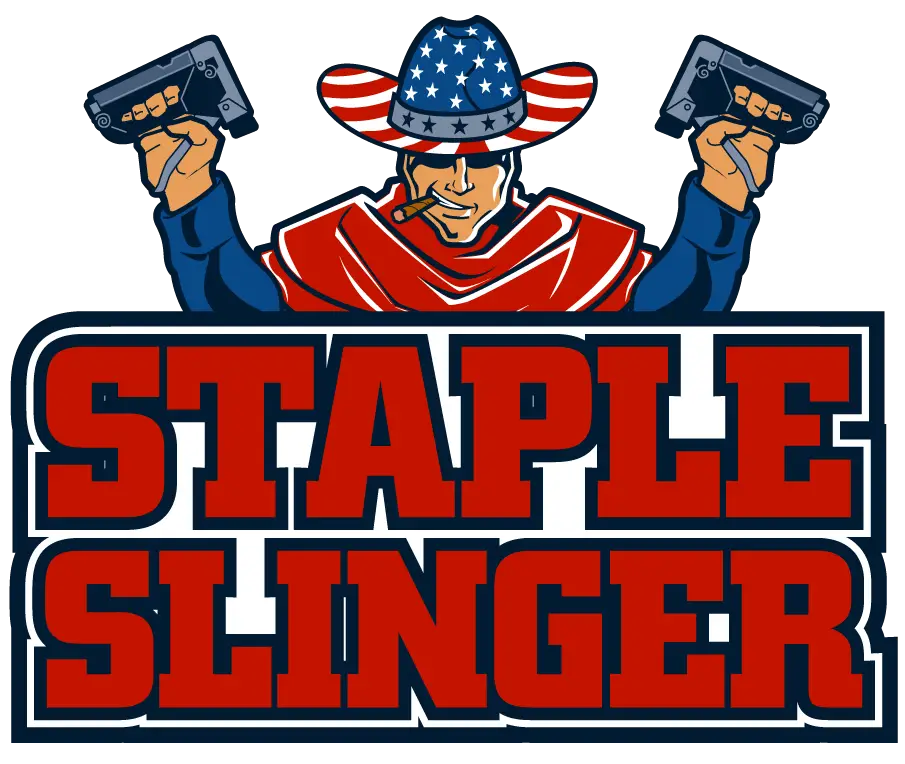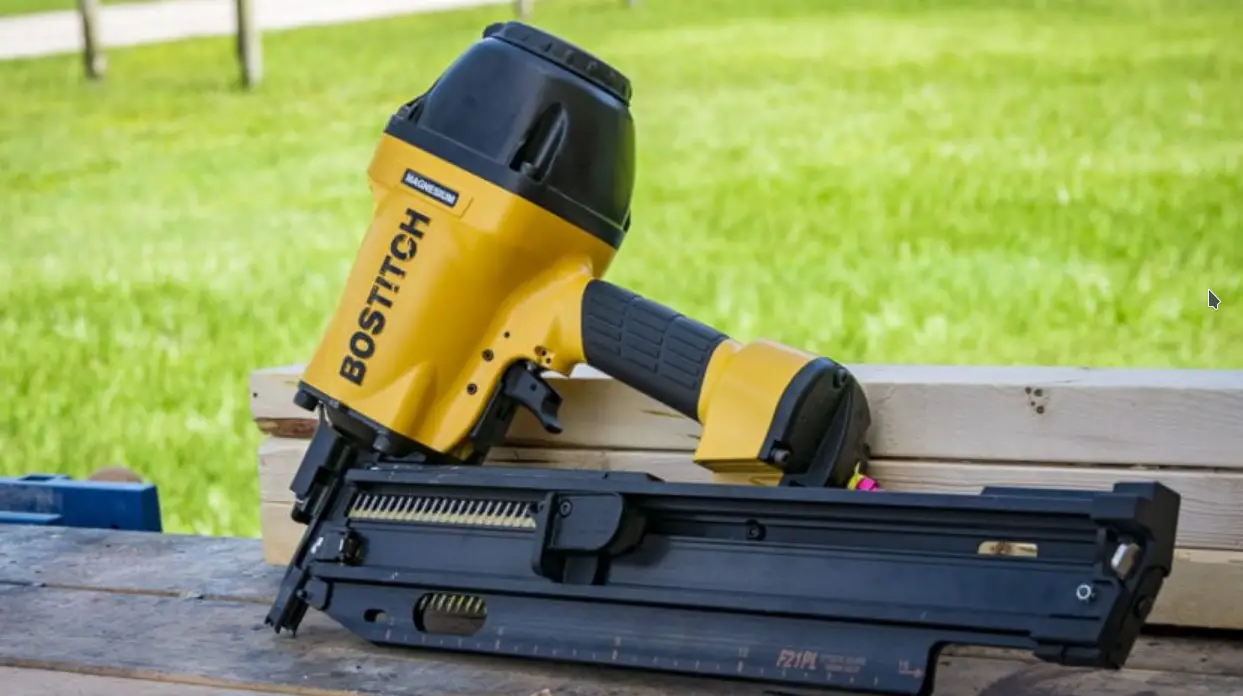Complete guide to using a nail gun: different type of nail guns
Nailer (nail gun) – a tool designed to drive fasteners without the use of physical force. As a rule, compressed air serves as a source of energy for hammering a nail. However, not every nail gun is right for every task, so it’s important to learn more about the different types of nail guns and when they should be used.
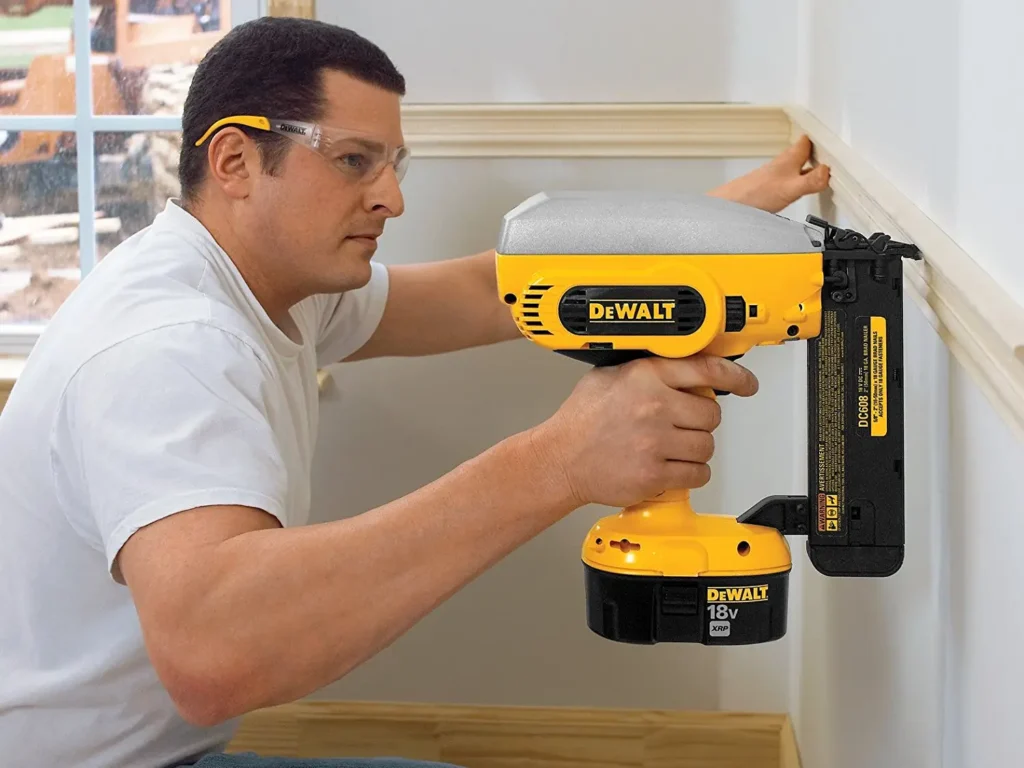
Nail guns are often designed for specific or specialized purposes. This means that using the wrong types of nail guns can ruin your planned job, so it’s important to choose other nail guns that are suitable for the correct job.
Here are 10 different types of nail guns that you can use for your projects.
Framing nailers
Suitable for: connecting large lumber for framing, installing a fence, or building a terrace.
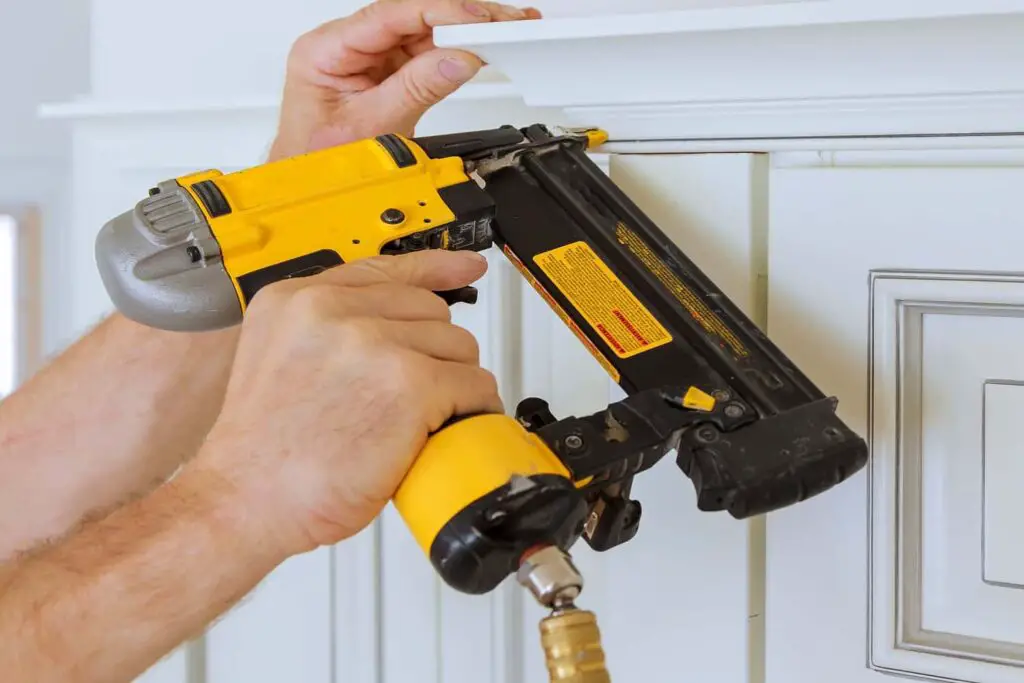
A framing nailer is a tool for driving framing nails up to 3.5 inches long into the wood. These are the largest and most powerful nail guns.
Framing nail guns are used to connect large-sized lumber used for the frame of buildings.
And also can be used for other woodworking projects such as building a terrace, fence, or even assembling furniture.
A framing nailer can be pneumatic and fuel. It also can be the battery framing nailers.
Brad Nailers
Suitable for: Installing trim and assembling or refurbishing a cabinet.
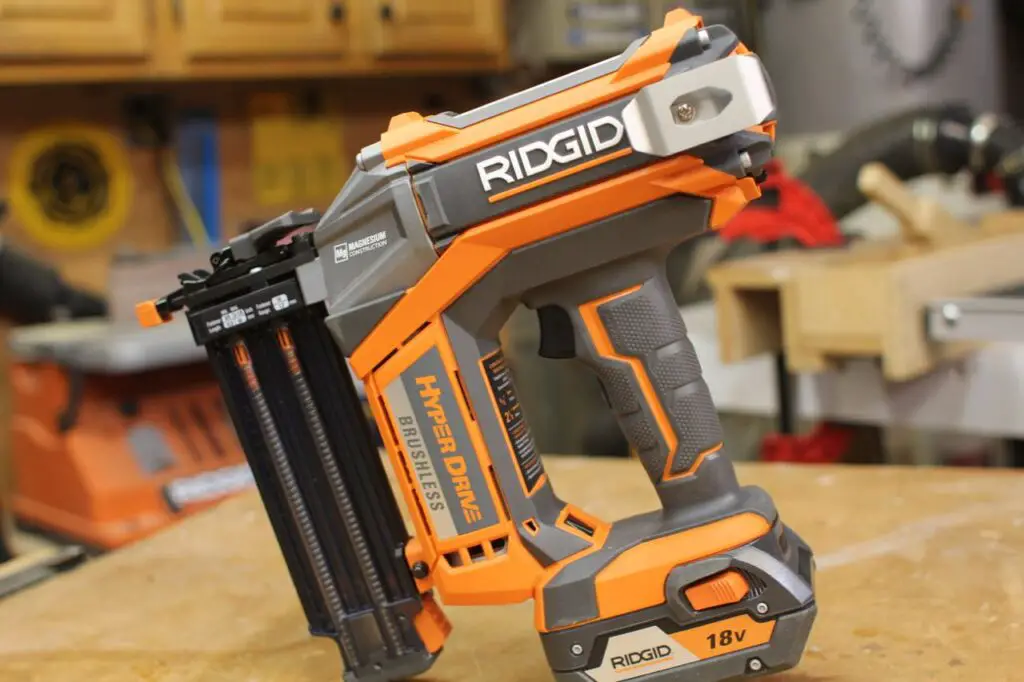
Such nailers are interior nailers used to install trim and make cabinets. They use thin 18 gauge nails that are very small and virtually invisible when you drive them into the wood.
18 gauge nails are very difficult to hammer in by hand. You can either bend the insertion nail, cover the nail and strike the workpiece, damage it, or even strike and injure the finger.
A brad nail gun can be used for example:
- Skirting boards
- Crown molding
- Finishing work, including door and window frames.
Finish Nailers
Suitable for: fastening trim and molding.
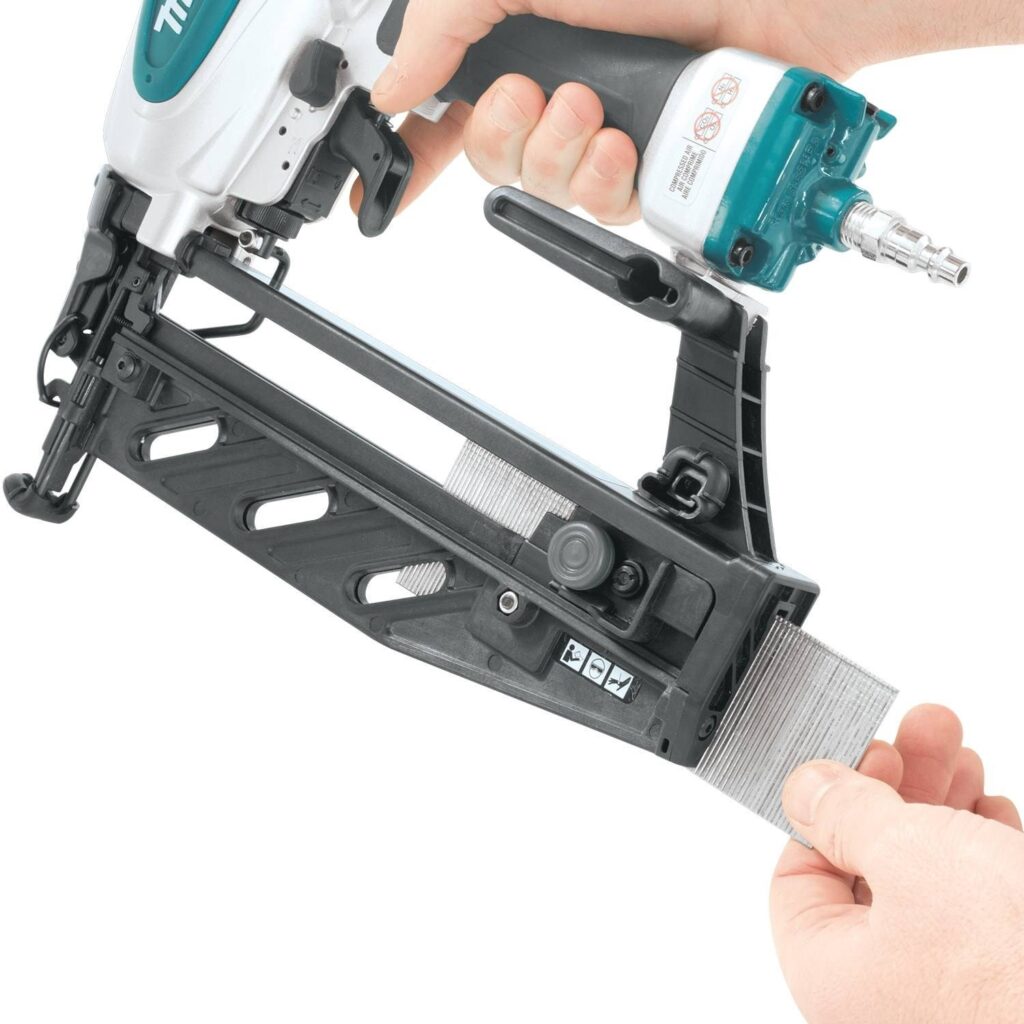
Finish nail gun uses 15 and 16-gauge nails or wire.
The finish nail gun has more holding power and thus is better suited for fitting larger trims and moldings.
The only downside is that finishing nails leave a more visible hole when they are fully driven into the overlay and therefore require extra care to hide the hole.
Siding Nailers
Suitable for: installing siding on the outside of the house.
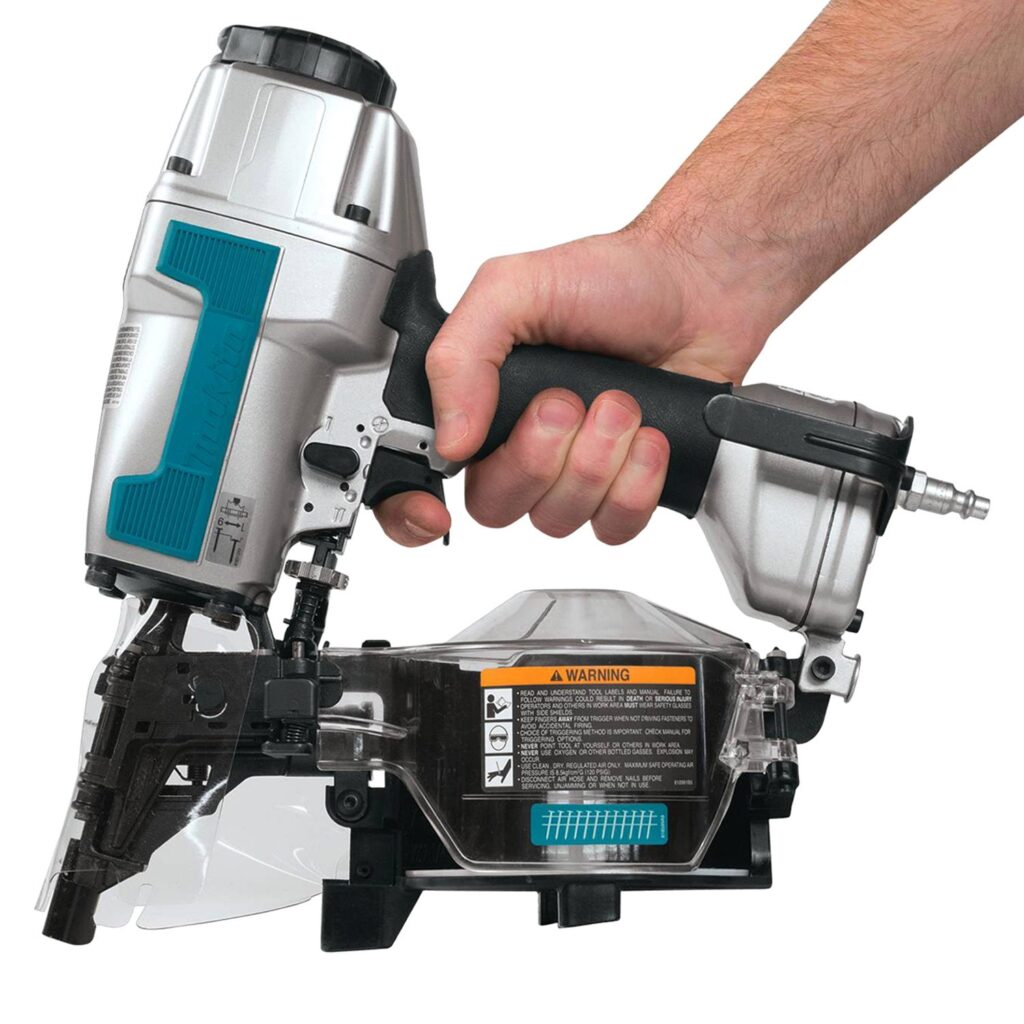
The siding nailer is mainly used for installing siding. Siding requires the use of smaller nails 1-1/2 to 2-1/2 inches long.
The siding nail gun, due to smaller nails and smaller magazines, is also lighter compared to the framing nailer. In comparison with the siding nailer, the framing nailer has a larger magazine and can accommodate longer nails.
This means you will experience less fatigue when using a siding nailer on your project.
Also, the siding nail gun isn’t as heavy as a framing nail gun, so you won’t tire as quickly when using these tools.
Roofing Nail Guns
Suitable for: durable roof tiles, vinyl material, insulation boards, and fiber cement.
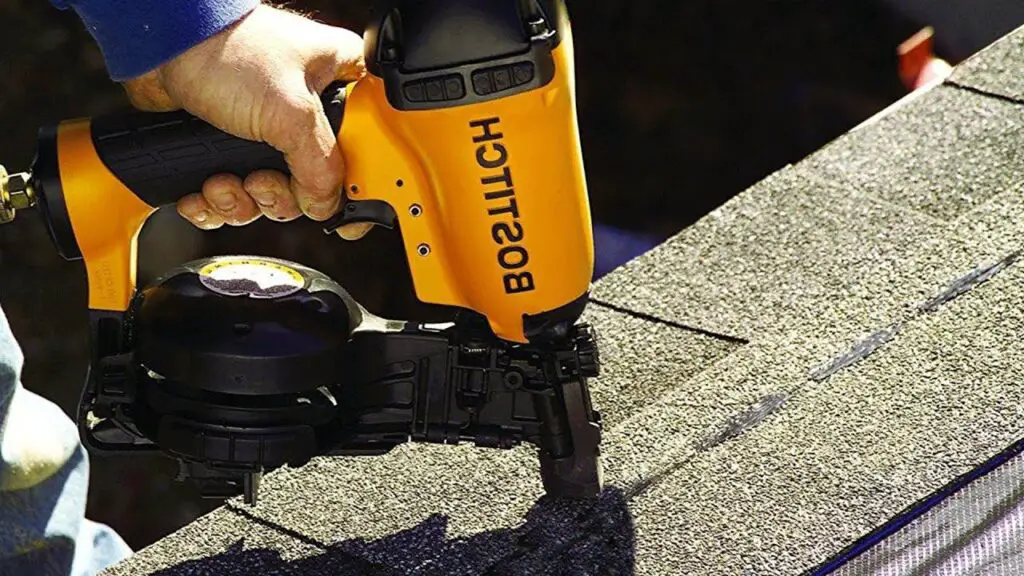
Roofing nail guns use ¾” to 1-3/4″ long roofing nails. Roofing nailers are designed for shingles, vinyl material, insulation boards, and even sometimes used for siding. (You can also use a siding gun to install the siding.)
Instead of a regular store, roofing nail guns usually come with a container for more nails. And roofing nailer drives nails very fast.
Pin Nail Guns
Suitable for: Making furniture and cabinets.
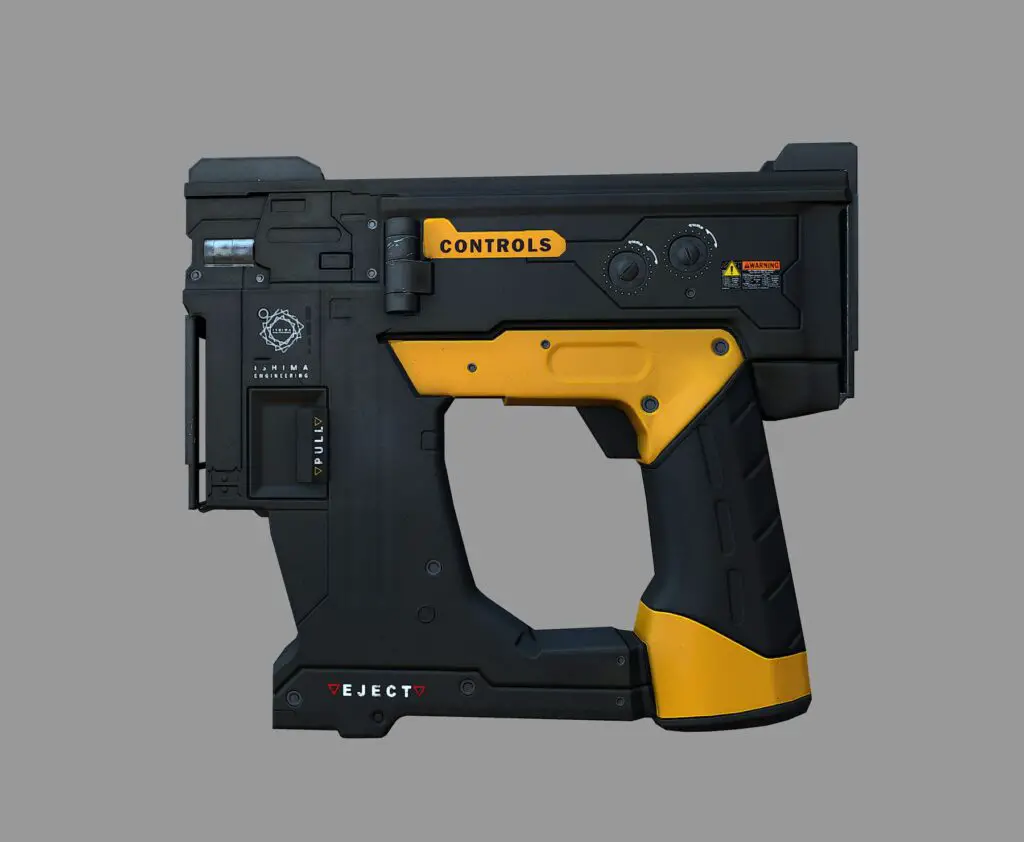
Pin nail gun uses 23 gauge nails.
Pin nail gun used to make furniture and cabinets, and to install moldings and trim. When driven into the wood, Pin nail guns practically drive nails and disappear into it, leaving no traces or holes that can be filled with putty.
You can also use a pin nail gun to drive nails into the wood and hold the glued wood pieces together for extra strength.
Please note that this pin nailer is very small in comparison with larger nail guns and does not have sufficient holding force or pull-out resistance, so the pin nailer should only be used for lightweight wood pieces. So the pin nailer is a good option if you need more delicate work.
Palm Nail Guns
A palm nail gun is a special type of nail gun specifically designed for driving nails into tight spaces where a hammer or even other nail guns would not fit. Palm nailer is designed in such a way that you can fit them into tight corners.
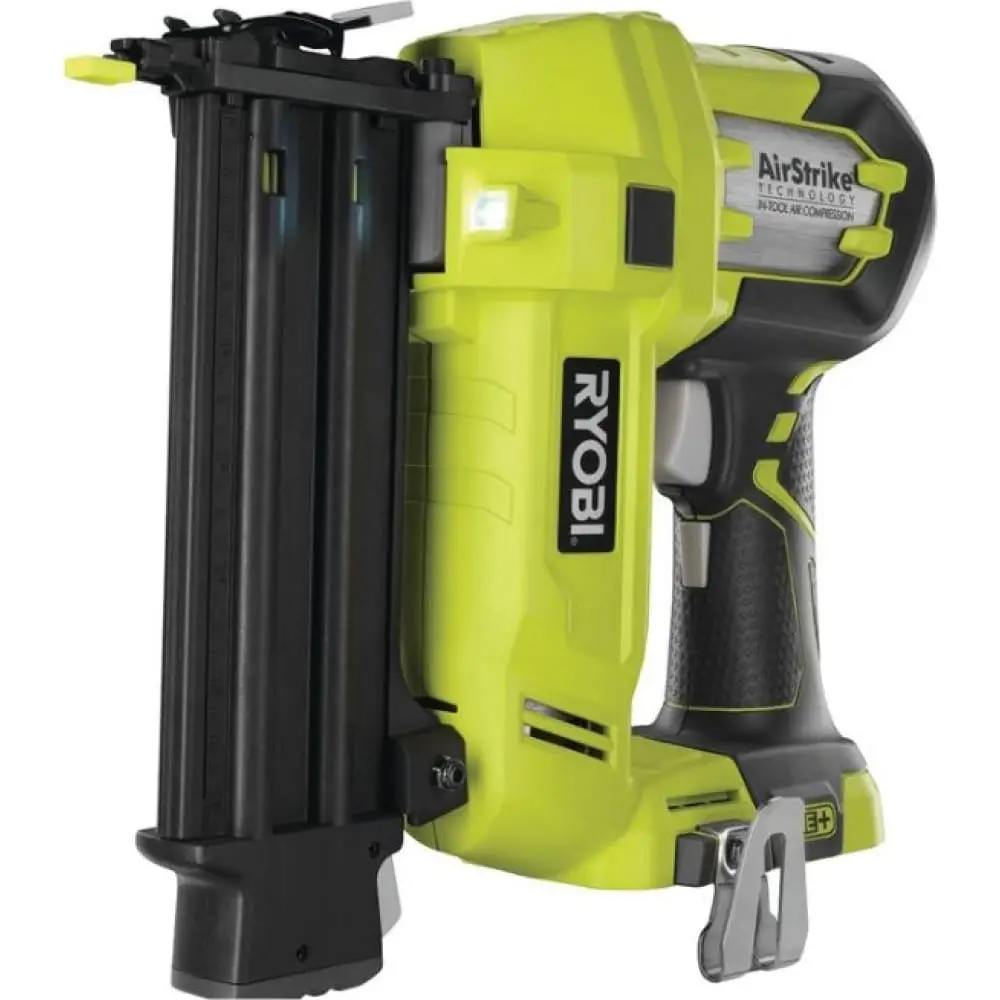
Instead of a straight handle extending vertically from the tip of the nailer, palm nailer use nailers which are rounded and fit in the palm of your hand. Palm nailers are widely used by carpenters.
This low height allows the palm nailer to fit in tight spaces, but the disadvantage is that the user only needs to insert one nail into the nail gun because palm nailers do not have a magazine for multiple nails.
Hardwood Nail Gun
Suitable for: Laying parquet.
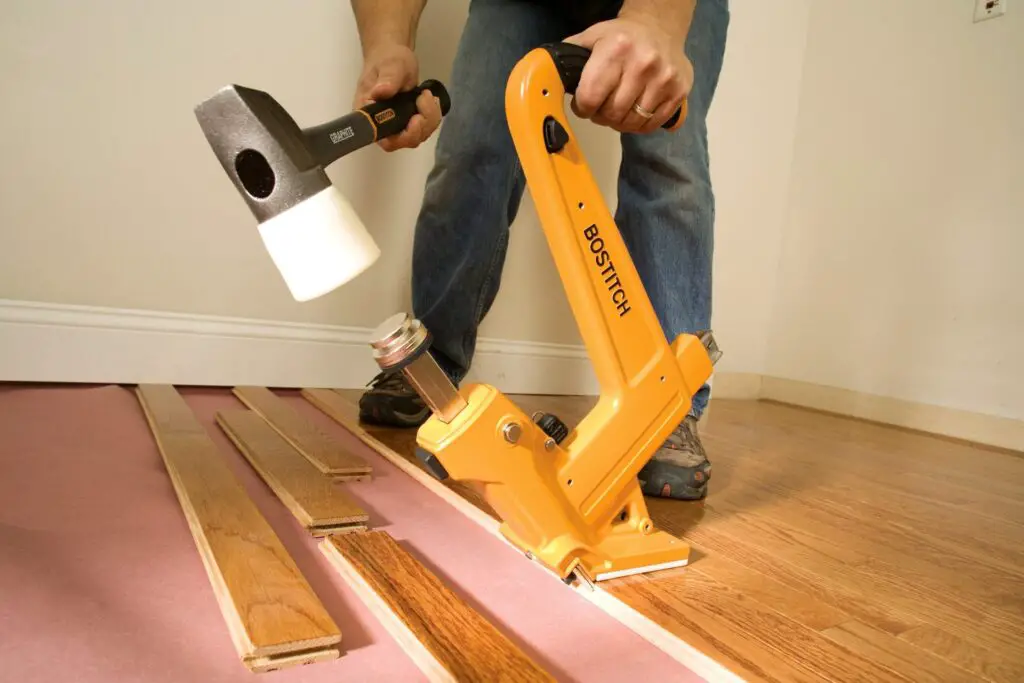
The hardwood nail gun uses a unique type of nail known as spikes. The boots are easy to recognize because they have an L-shaped or T-shaped head. A hardwood nail gun can be a manual or pneumatic nail gun and use an air compressor to help drive spikes through hardwood.
The force required depends on the density of the hardwood being installed and the length of the plank. You need to apply more force when you are trying to hammer longer spikes or if you are working with denser wood.
Staple Guns
Suitable for: attaching upholstery to furniture, laying carpets, and installing wood paneling.
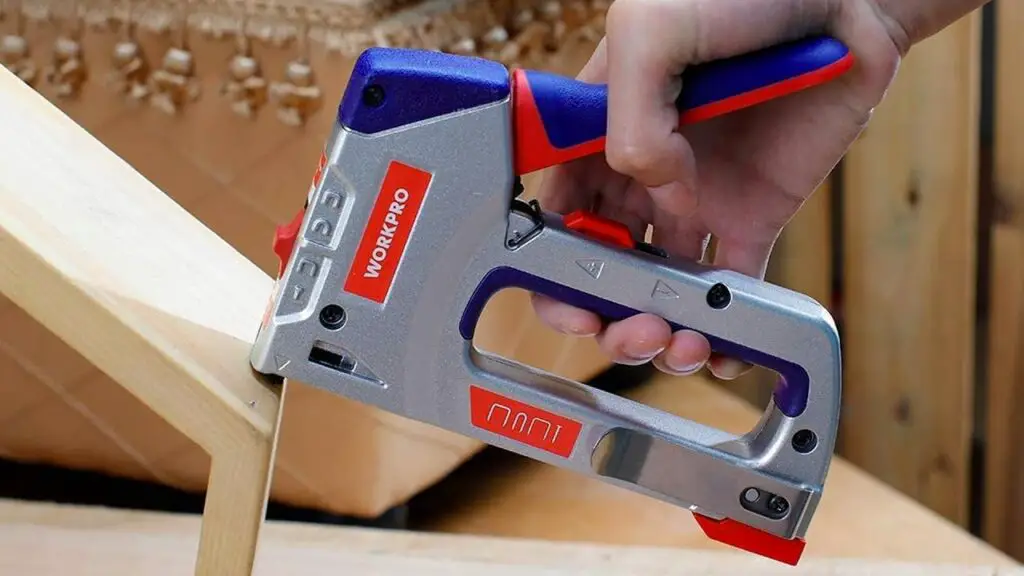
A staple gun is a specialized type of nail gun that hammers heavy staples instead of nails. A staple gun makes these nailers ideal for upholstery repairs or carpet laying because a regular nail gun can slip or break through the material.
The staple gun works best in vertical areas. Although it is short, quite versatile, and can be used on a wide variety of surfaces. Intensive use of staple guns with the tool helps to hold the surfaces firmly.
A staple gun can also be used for small carpentry jobs such as building a birdhouse or installing wood paneling. Plus, with the right brackets, you can use a staple gun to secure electrical wires to walls, ceilings, or baseboards without damaging the wires. Also, staple nail guns are often used withthinner sheets of wood.
It has a tool for removing misplaced staple guns, similar to a hammer stapler. Staple guns work best on vertical surfaces, while hammer trackers work best on horizontal surfaces.
Concrete and Steel Nailers
Suitable for: wood and concrete/steel work such as sheathing strips, plywood fastening to concrete, lathe installation, steel tape, decking, fencing, and flooring nail guns.
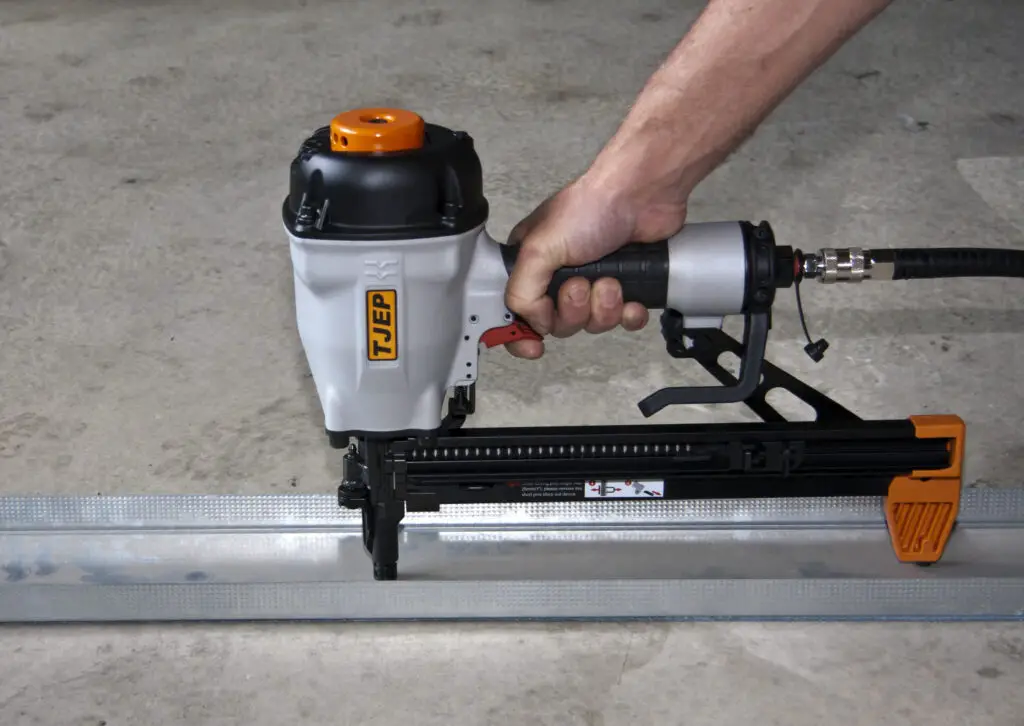
Concrete and steel fasteners or pins are different from each other and have different sizes and thicknesses.
Most concrete nail guns are usually pneumatic, but there are now cordless electrical devices.
Classification of nail guns according to the principle of operation and power source
Framing nailers have been created to complete houses. Framing nail guns drive long nails deep into the wood and produce high-strength and durable frame structures.
Framing nail gun includes 4 types of nail guns.
Pneumatic/Air-Powered Nail Guns
A pneumatic Framing Nailer is a gun that is powered by a supply of compressed air that comes from a gas air compressor.
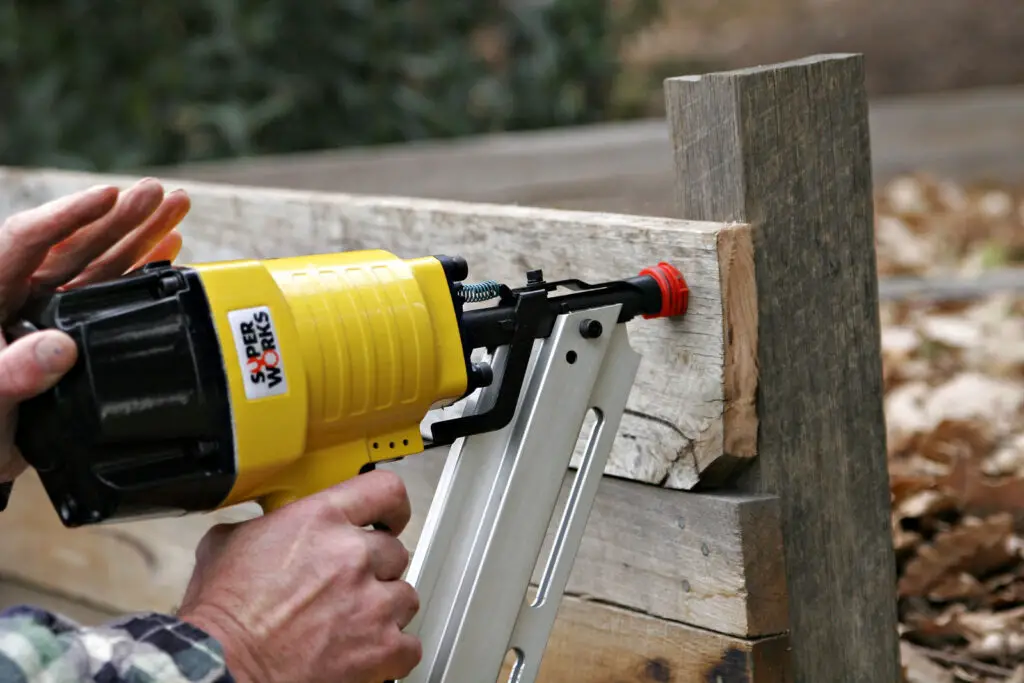
In most cases, an air nailer works in two stages. In the first stage, the cylinders take air from the air as they move up. In the second stage, the inhaled air is pushed out to the air reservoir and then to the bottom of the gun. Also, note that pneumatic flooring nailers require minimum human effort.
Fuel/Gas Powered Nails Guns
Fuel-powered guns are similar to pneumatic nailers, but the power source is gas. Gasoline-powered nail guns are better than pneumatic ones because they are not only faster but also more efficient.
Butane is stored in a consumable internal cell and accumulator in gas nailers. As soon as you click on the nail gun, fuel will pour out. The battery starts to ignite and burns fuel. This spark turns into a huge energy that throws the nail onto the surface of the material.
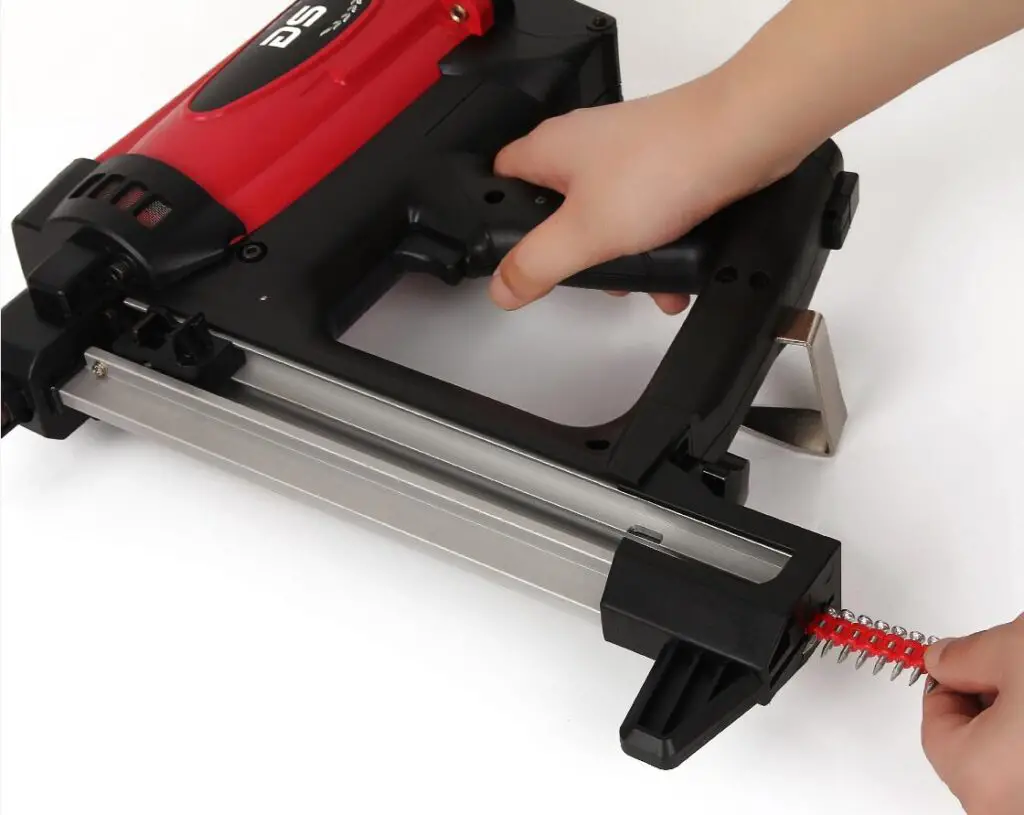
The next nail is automatically inserted after the nail comes out of the gun. The gas nail gun does not have a cord and is commonly referred to as a cordless framing nail gun.
Electric Corded Nail Guns
This nail gun cannot be taken on the road due to the length of the cable. However, it still has the advantage of not having a time limit like the battery type. You don’t have to worry about recharging your battery all day long as long as it has a power source.
Electric Cordless Nail Guns
These nailers are powered by lithium-ion batteries, allowing them to stay charged throughout the day. You also need to have extra batteries on hand.
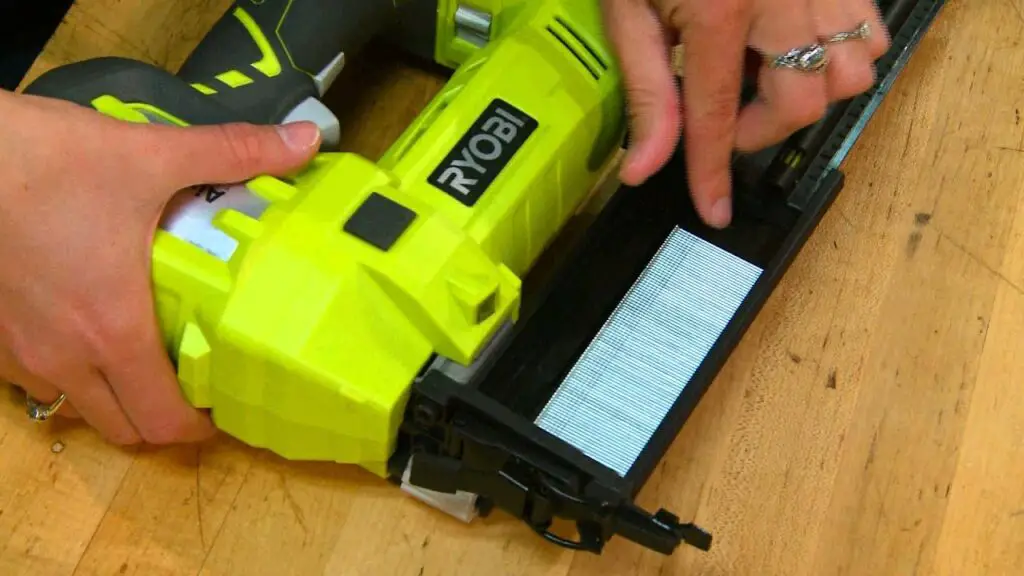
Nail guns that don’t need an air compressor are simple and can be used for any light nail job. The mobility of cordless nailers is unsurpassed, but they cannot achieve the same results as air guns.
What type of nail gun do I need for my project?
This is a great question and one you should think about before renting or buying a nail gun. The type of nail gun you need depends on the project you are working on.
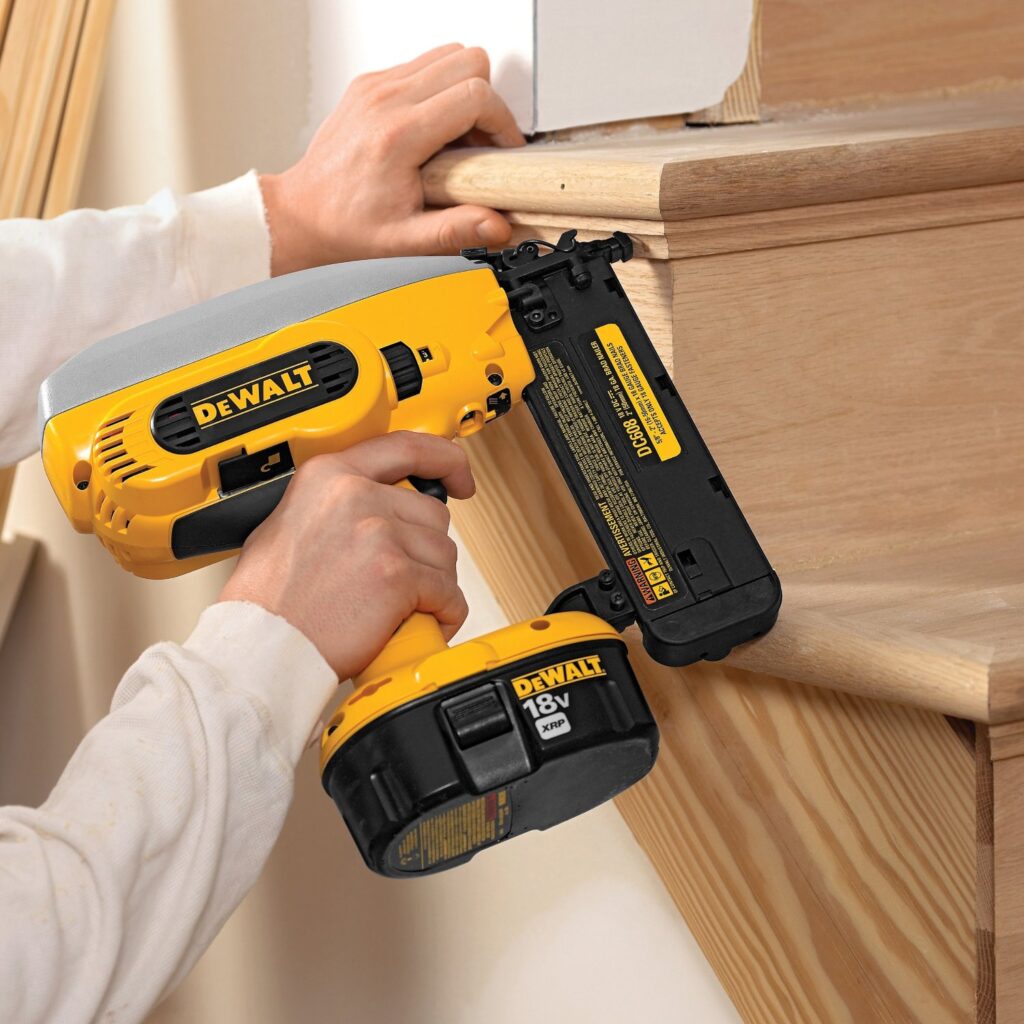
For example, if you’re doing a simple home improvement project, like decorating, you might only need a nailer. But if you’re working on something more substantial, like building a deck, you’ll need a finishing nailer.
The most common is plastic tape nails and wire tape nails.
Nails in the plastic tape are less likely to get stuck in the gun, but they are also more expensive. Wire tape nails are cheaper, but they are more likely to get stuck in the gun.
How to choose between Brad nail guns and Finish Nailer?
Here’s a brief difference between the two.
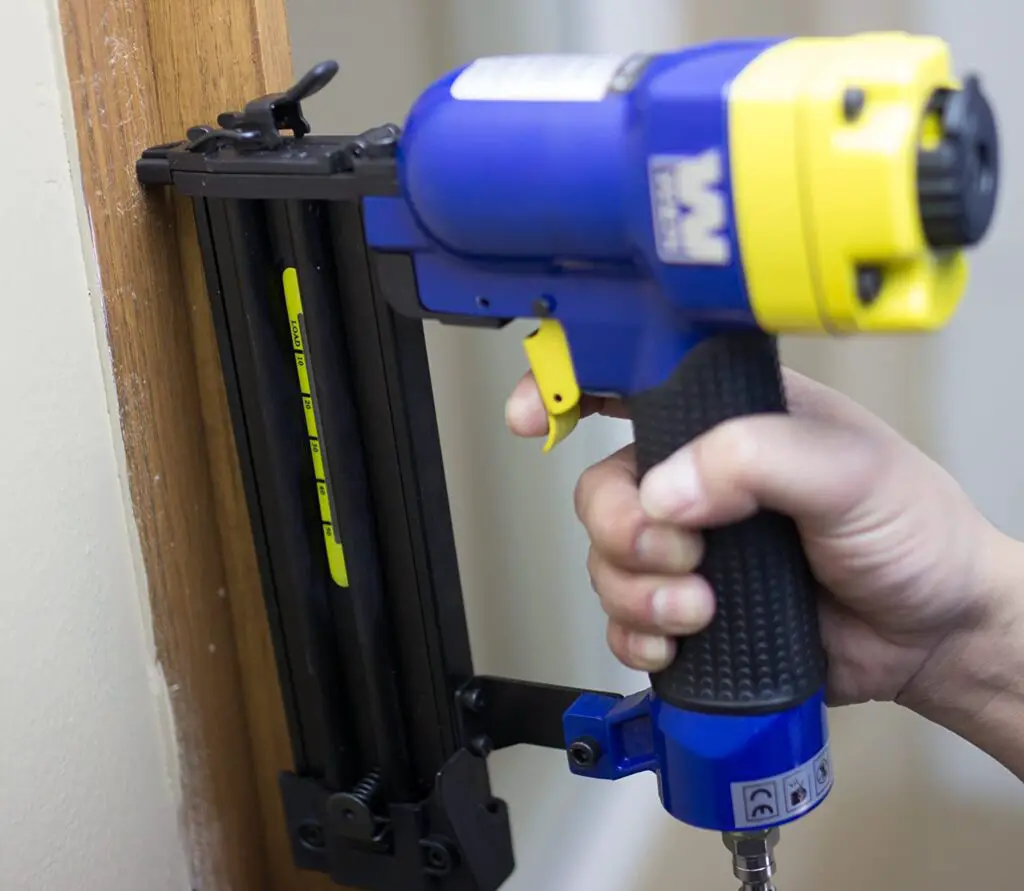
Brad nailers are smaller and lighter than Finish nailers, making them more maneuverable. They are also less likely to leave visible marks on the workpiece.
Finish Nailers are bulkier than Brad nailers, but they are also more powerful. This extra power comes in handy when you’re working with harder woods.
If you mainly do small projects, Brad gun might be the one for you. But if you’re working with heavier materials, Finish Nailer is your best bet.
Comparison of pneumatic and cordless nailers
Both have their pros and cons, so it all comes down to personal preference for a specific nail gun type.
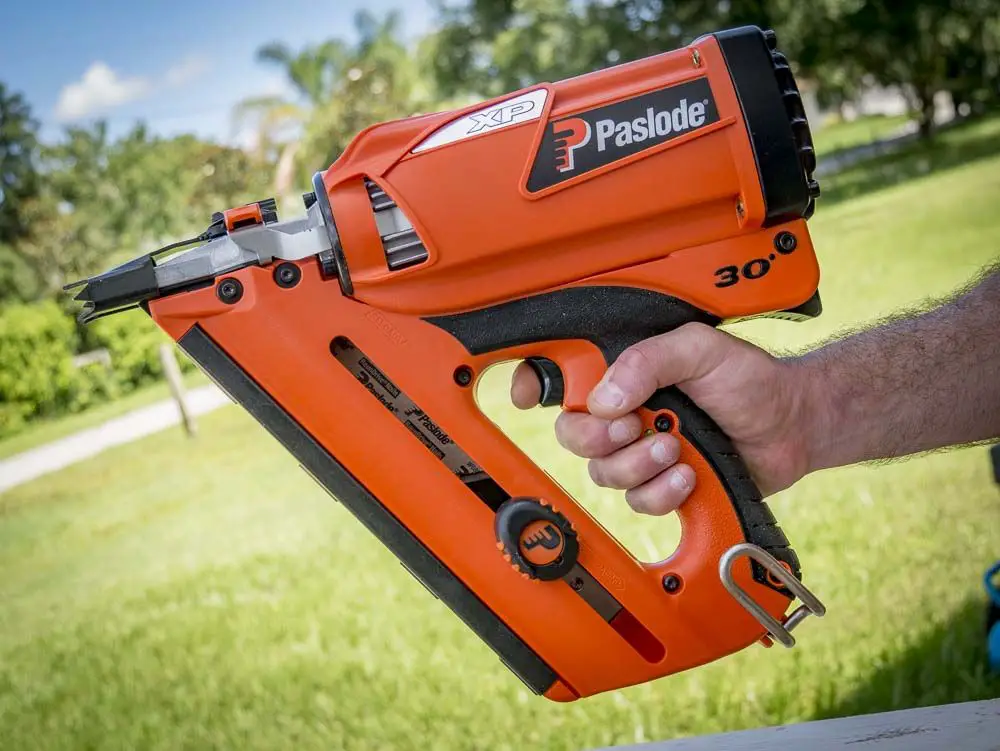
Pneumatic nailer run on compressed air which means they are perfect for people who already have an air compressor. Plus, they’re usually lighter than cordless nailers, so if you’re going to be using them for a long time, this might be the best option.
On the other hand, a cordless nail gun is battery powered so you don’t need an air compressor. This makes them more comfortable to use, but they are usually heavier than pneumatic nail guns.
Maintenance tips for nail guns
With any tool, it is always necessary to carry out maintenance to ensure its smooth operation. Here are some tips for caring for your manicure gun:
- Always read the instructions that came with your nail gun. This may seem like an easy task, but it is important to become familiar with the tool and how it works.
- Clean the nail gun with a brush or compressed air after each use. This will prevent dirt and debris from accumulating and clogging the mechanism.
- Store it in a cool, dry place. Moisture can damage the instrument’s internal components, so it’s best to store it in a safe place until you need it again.
FAQs:
Various types of nail guns are available in different lengths. The most typical nailer reaches a length of 3/8 to 1 1/4 inches, and the most common nailer usually reaches a length of 2 to 3 1/4 inches. For woodworking, you can use a Brad nailer.
A 16 gauge nail gun is a good choice for many projects and can be used for many purposes as well. 15mm nails can be used when installing thick overlays. 18 gauge nails can be used for small parts when repairing furniture or for repairing small pieces of furniture.
Choosing between a Brad nailer and a Finish nailer can be difficult as both tools offer unique advantages.
Brad nailers are ideal for smaller projects such as trimming and sculpting where precision is key.
Finish nailers are best suited for large projects such as cabinets or furniture where strength and durability are of paramount importance.
Ultimately, the best tool for the job depends on the specific needs of the project.
If you don’t want to waste time with a hammer and nails, you will need a mounting nailer.
The most popular of all nail guns, air nail guns are a solid choice for professionals as they offer incredible power and come in a variety of makes and models.
Conclusion
Today, there are various types of nail guns. They usually differ from each other in the size and length of the nails, and the type of application for which they are used.
So, what’s the difference between Brad and a Finish nailer? A Brad nailer uses nails that are thinner and smaller in diameter than a finish nailer. On the other hand, the finishing nailer uses thicker and larger-diameter nails.
Brad nailers are good for small projects while finish nailers are better suited for larger projects. Brad nailers are also cheaper than finish nailers, so they are a good option if you’re on a budget.
Ultimately, the type of nail gun you need depends on the project you’re working on. If you’re not sure which type of nail gun is best for you, seek the advice of a professional.
Read also: Best Staple Gun for Picture Framing (2024)
